Science & Technology

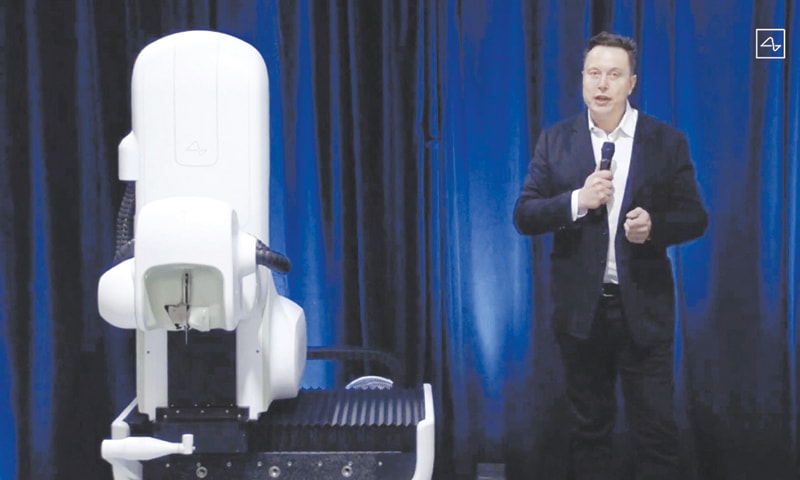
SAN FRANCISCO: Elon Musk’s startup Neuralink on Thursday said it has approval from US regulators to test its brain implants in people.
Neuralink said clearance from the US Food and Drug Administration (FDA) for its first in-human clinical study is “an important first step” for its technology, which is intended to let brains interface directly with computers.
“We are excited to share that we have received the FDA’s approval to launch our first-in-human clinical study,” Neuralink said in a post on Musk-run Twitter.
Recruitment for a clinical trial is not yet open, according to Neuralink.
The tech has previously been tested on animals
The aim of Neuralink implants is to enable human brains to communicate directly with computers, Musk said during a presentation by the startup in December.
“We’ve been working hard to be ready for our first human (implant), and obviously we want to be extremely careful and certain that it will work well before putting a device in a human,” he said at the time.
Neuralink prototypes, which are the size of a coin, have been implanted in the skulls of monkeys, demonstrations by the startup showed.
At a presentation, Neuralink showed several monkeys “playing” basic video games or moving a cursor on a screen through their Neuralink implant.
The technology has also been tested in pigs. With the help of a surgical robot, a piece of the skull is replaced with a Neuralink disk, and its wispy wires are strategically inserted into the brain, an early demonstration showed.
The disk registers nerve activity, relaying the information via common Bluetooth wireless signal to a device such as a smartphone, according to Musk. “It actually fits quite nicely in your skull,” Musk said during a prior presentation.
“It could be under your hair and you wouldn’t know.”
Uploading memories?
Musk said the company would try to use the implants to restore vision and mobility in humans who had lost such abilities. “We would initially enable someone who has almost no ability to operate their muscles... and enable them to operate their phone faster than someone who has working hands,” he said.
“As miraculous as it may sound, we are confident that it is possible to restore full body functionality to someone who has a severed spinal cord,” he said.
Beyond the potential to treat neurological diseases, Musk’s ultimate goal is to ensure that humans are not intellectually overwhelmed by artificial intelligence (AI), he said.
Other companies working on similar systems include Synchron, which announced in July that it had implanted the first human brain-machine interface in the United States.
Members of the Neuralink team have shared a “wish list” that ranged from technology returning mobility to the paralysed and sight to the blind, to enabling telepathy and the uploading of memories for later reference — or perhaps to be downloaded into replacement bodies.
Meanwhile, Musk recently established a business devoted to developing sophisticated AI. The boss of Tesla has also predicted that autonomous driving technology at the electric car maker is heading for a breakthrough.
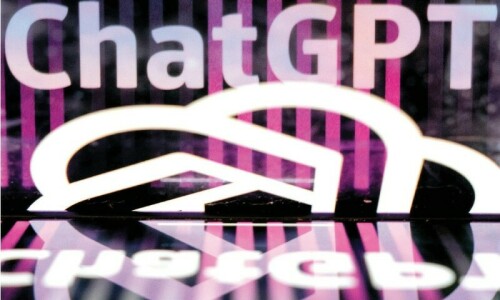
KARACHI: Six in every 10 cryptocurrency users are eager for artificial intelligence (AI) advancements in blockchain and trading, according to a survey released on Thursday by KuCoin, one of the global crypto exchanges.
Over 90 per cent of the respondents said they’ve utilised or expressed interest in using AI to boost efficiency in their daily lives, said the survey, which covers the users’ perspectives and aspirations across different generations regarding AI integration and blockchain efficiency.
Respondents belonging to Gen Z (born between the late 1990s and the early 2010s) and Gen Y (born between the early 1980s and the late 1990s) show a higher adoption rate and positive reception of AI compared to those belonging to Gen X (born between the mid-1960s and the late 1970s) — a trend that indicates a generational shift in embracing AI technologies, it showed.
Conducted from May 10 to May 17, the survey is based on a sample of 1,125 crypto users around the world. Respondents include 15 per cent Gen Z (aged 18-24), 54pc Gen Y (aged 25-40) and 31pc Gen X (aged 40-plus) members.
The survey said generative AI for text, such as ChatGPT, is favoured across all generations, with 51pc of respondents preferring it. Navigation apps and voice AI assistants are highly appreciated for their practicality and convenience, especially among Gen Z and Gen Y.
AI-generated creative content and AI-powered trading tools are also gaining popularity, particularly among Gen Y users.
The survey showed AI applications for education and work efficiency pique interest across all generations, demonstrating the demand for streamlined processes and personalised experiences.
The growing interest in AI applications for healthcare and security/risk management is observed across all generations, showcasing the increasing acceptance of AI’s potential in these sectors.
Privacy and security issues are the top concern for 48pc of users, with Gen X respondents being particularly apprehensive about the centralisation of power resulting from AI deployment.
Worries about human control, transparency and job losses are shared across all generations but are more pronounced among Gen X users, it showed.
As for the understanding of AI in crypto, the survey showed 64pc of crypto users are at least “somewhat” familiar with AI applications in blockchain/crypto. Gen Z and Gen Y display a higher level of familiarity compared to Gen X, indicating an opportunity for education and awareness-building tailored to different generational needs.
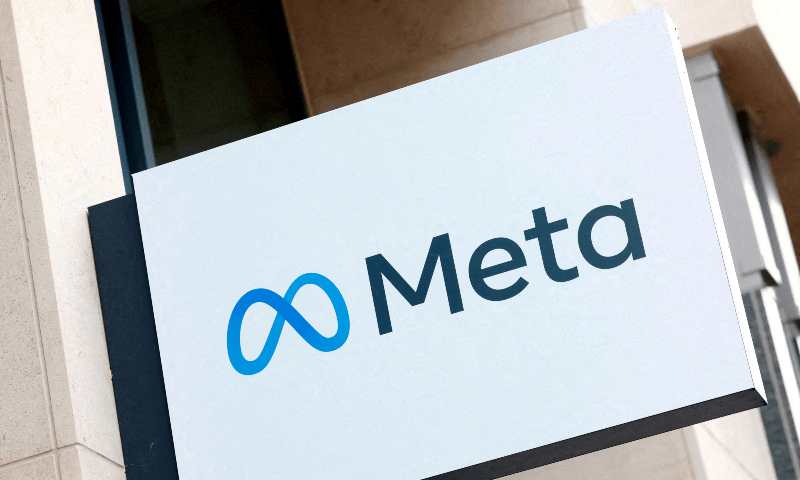
DUBLIN: Meta was hit with a record 1.2 billion euro ($1.3 billion) fine by its lead European Union privacy regulator over its handling of user information and given five months to stop transferring users’ data to the United States.
The fine, imposed by Ireland’s Data Protection Commissioner (DPC), came after Meta continued to transfer data beyond a 2020 EU court ruling that invalidated an EU-US data transfer pact. It tops the previous record EU privacy fine of 746 million euros handed by Luxembourg to Amazon.com Inc in 2021.
The battle over where Meta’s Facebook stores its data began a decade ago after Austrian privacy campaigner Max Schrems brought a legal challenge over the risk of US snooping in light of disclosures by former US National Security Agency contractor Edward Snowden.
Meta said in a statement that it will appeal the ruling, including the “unjustified and unnecessary fine that sets a dangerous precedent for countless other companies”. It will also seek a stay of the suspension orders.
The social media giant reiterated that it expected a new pact facilitating the safe transfer of EU citizens’ personal data to the United States would be fully implemented before it has to suspend transfers.
That would mean its previous warning that a stoppage could force it to suspend Facebook services in Europe would not come to pass.
“Without the ability to transfer data across borders, the internet risks being carved up into national and regional silos,” Meta said.
The DPC said in March that EU and US officials hoped that the new data protection framework - agreed by Brussels and Washington in March 2022 — may be ready by July.
Europe’s top court, the European Court of Justice, threw out the two previous pacts over concerns about US surveillance.
Schrems, the Austrian privacy campaigner, said Meta’s plans to rely on the new deal for transfers going forward was unlikely to be a permanent fix.
“In my view, the new deal has maybe a 10% chance of not being killed by the CJEU (EU Court of Justice). Unless US surveillance laws gets fixed, Meta will likely have to keep EU data in the EU.”
The Irish watchdog, which is the lead EU regulator for many of the world’s top technology companies, said the suspension order could create a precedent for other firms.
The DPC said it did not initially propose adding a fine to the suspension order, but that four other EU supervising authorities disagreed and the record fine was included.
The Irish regulator has fined Meta more than any other tech firm and has 10 other inquiries open into the social media group’s platforms.
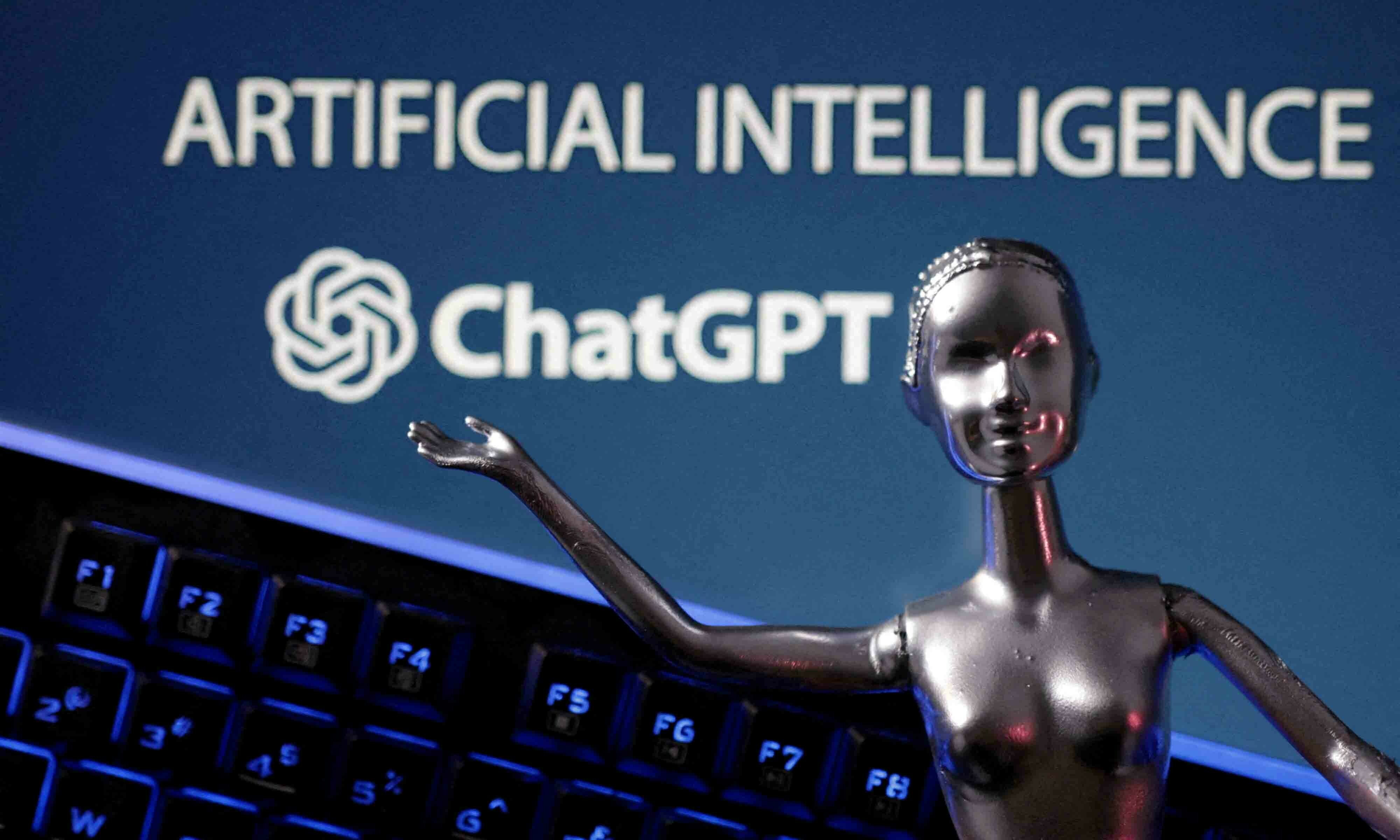
WASHINGTON: The explosion of generative AI has taken the world by storm, but one question all too rarely comes up: Who can afford it? OpenAI bled around $540 million last year as it developed ChatGPT and says it needs $100 billion to meet its ambitions, according to industry media The Information.
“We’re going to be the most capital-intensive startup in Silicon Valley history,” OpenAI’s founder Sam Altman told a panel recently.
And when Microsoft, which poured billions of dollars in investment into OpenAI, is asked about how much its AI adventure will cost, the company answers with assurances that it is keeping an eye on its bottom line.
Building something even near the scale of what OpenAI, Microsoft or Google have on offer would require an eye-watering investment on state-of-the-art chips and recruiting prize-winning researchers.
“People don’t realise that to do a significant amount of AI things like ChatGPT takes huge amounts of processing power. And training those models can cost tens of millions of dollars,” said Jack Gold, an independent analyst.
“How many companies can actually afford to go out and buy 10,000 Nvidia H100 systems that go for tens of thousands of dollars apiece?” asked Gold.
The answer is pretty much no one and in tech, if you can’t build the infrastructure, you rent it and that is what companies already do massively by outsourcing their computing needs to Microsoft, Google and Amazon’s AWS.
And with the advent of generative AI, this dependency on cloud computing and tech giants deepens, leaving the same players in the driver’s seat, experts warned.
‘Heavily underestimated’
The unpredictable costs of cloud computing, “is a heavily underestimated problem for many companies,” said Stefan Sigg, Chief Product Officer at Software AG, which develops software for businesses.
Sigg compares cloud costs to electricity bills and says companies that don’t know better are in for “a big surprise” if they let their engineers run up bills in the mad rush to build tech, including AI.
Microsoft’s signature cloud offer is Azure and some observers believe the giant’s all-in bet on AI is really about protecting Azure success and guaranteeing the cash cow’s future.
Azure has been the giant’s unsexy bread-winner for years, bringing in huge profits but without attracting the headlines of an iPhone or social media that go straight to the consumer.
For Microsoft, “the golden goose is monetising cloud with Azure because we’re talking about what could be a $20, $30, $40 billion opportunity annually down the road if the AI bet is successful,” said Dan Ives of Wedbush Securities.
Microsoft CEO Satya Nadella insists that generative AI is “moving fast in the right direction.” Deeply respected on Wall Street, Nadella will have a six- or nine-month grace period to show his bet is a winner, Ives predicted.
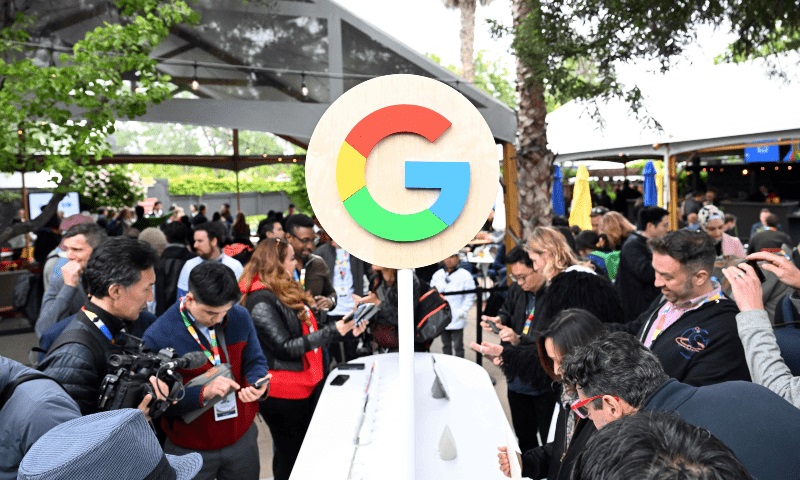
MOUNTAIN VIEW (California, US): Alphabet Inc’s Google on Wednesday unveiled more artificial intelligence in its products to answer the latest competition from Microsoft Corp, which has threatened its perch atop the nearly $300 billion search advertising market.
Through an internal project code-named Magi, Google has looked to infuse its namesake engine with generative AI, technology that can answer questions with human-like prose and derive new content from past data.
The effort will be the most closely watched as Google executives take the stage at its yearly conference I/O in Mountain View, California, near its headquarters. The result could alter how consumers access the world’s information and which company wins the global market for search advertising, estimated by research firm MAGNA to be $286 billion this year.
“We are reimagining all of our core products, including search,” Sundar Pichai, Alphabet’s CEO, said after he took the stage at the event.
He said Google is integrating generative AI into search and other products, including Gmail, where it can create draft messages, and Google Photos, where it can make major changes to images.
Alphabet shares rose 2.5 per cent after the news. They have risen by a fifth so far this year, compared with a 17pc rise in the tech-focused Nasdaq Composite index.
Now, Google is making its ChatGPT competitor, Bard, multimodal like OpenAI’s GPT-4, the company said on Wednesday, and will make it accessible to people in more than 180 countries and territories.
That means customers will be able to prompt Bard with images, not just text — for instance asking the chatbot to write a caption to a picture they hand it, it said.
Behind Bard also is a more powerful AI model Google announced called PaLM 2, which it said could solve tougher problems. PaLM 2 is currently available as a preview.
Pichai said one of its PaLM 2 models is lightweight enough to work on smartphones. The Bard chatbot is now running on PaLM 2, the company said.

WASHINGTON: The world’s first 3D printed rocket is scheduled to blast off from Florida on Saturday on the maiden flight of an innovative spacecraft billed as being less costly to produce and fly.
Liftoff of the rocket, Terran 1, had been scheduled for Wednesday at Cape Canaveral but was postponed at the last minute because of propellant temperature issues. The new launch window for the rocket built by California aerospace startup Relativity Space to put satellites into orbit is from 1pm to 4pm on Saturday.
Terran 1 is set to reach low Earth orbit eight minutes after blastoff on a voyage intended to gather data and demonstrate that it can withstand the rigors of liftoff and space flight.
If the rocket manages to attain low Earth orbit, it will be the first privately-funded vehicle using methane fuel to do so on its first try, according to Relativity.
Terran 1 is not carrying a payload for its first flight but the rocket will eventually be capable of putting up to 2,755 pounds into low Earth orbit.
The rocket is 110-feet tall with a diameter of 7.5 feet and 85 per cent of its mass is 3D printed with metal alloys, including the engines.
It is the largest ever 3D printed object according to the Long Beach-based company whose goal is to produce a rocket that is 95pc 3D printed.
Terran 1 is powered by Aeon engines using liquid oxygen and liquid natural gas — the “propellants of the future,” according to Relativity, capable of eventually fueling a voyage to Mars. Vulcan rockets being developed by United Launch Alliance and SpaceX’s Starship use the same fuel.

DOHA: Only a third of people in the world’s poorest countries can connect to the internet, the UN telecoms agency said on Sunday, but low-flying satellites could bring hope to millions, especially in remote corners of Africa.
Tech giants including Microsoft have pledged to help populations hobbled by poor internet services to “leapfrog” into an era of online connectivity, with satellites set to play a key role as rival firms send thousands of new generation transmitters into low level orbit.
At the moment just 36 per cent of the 1.25 billion people in the world’s 46 poorest countries can plug into the internet, the International Telecommunication Union said. By comparison, more than 90pc have access in the European Union.
The ITU condemned the “staggering international connectivity gap” that it said had widened over the past decade.
The divide has been a key complaint at a UN summit of Least Developed Countries in Doha, where UN Secretary General Antonio Guterres told their leaders that “you are being left behind in the digital revolution”.
The digital dearth is particularly acute in some African countries, including the Democratic Republic of Congo, where barely a quarter of the population of nearly 100 million can connect.
While internet access is easy in major DRC cities such as Kinshasa, huge rural zones and swathes of territory battled over by rival rebel groups for more than two decades are digital deserts.
The launch of thousands of Low-Earth Orbit satellites could bring speedy change and boost African hopes, tech experts promised at the Doha summit.
‘Leapfrog other nations’
Satellite coverage will play a key role in Microsoft’s vow to bring internet access to 100 million Africans by 2025, which was outlined ahead of the summit.
Microsoft announced a first phase for five million Africans in December and last week added a commitment to cover another 20 million people.
The initial five million will be served by Viasat, one of the companies sending constellations of satellites into space to compete with land-based fibre broadband.
Elon Musk’s Space X and Starlink are also putting thousands of satellites into an orbit between 400 and 700 kilometres above Earth.
Microsoft president Brad Smith said that when he first saw the 20 million figure proposed by his team last year, he asked “is this real?”, but that he was now convinced it is possible.
“The technology costs have come down substantially and will continue to drop,” he said. “That is part of what makes it possible to move this fast to reach this size of population.


